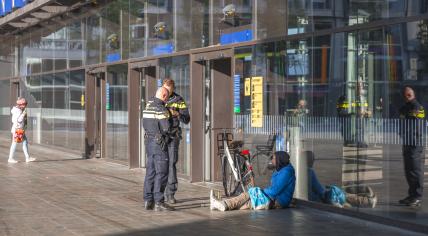
At least 6,000 migrant workers are homeless in the Netherlands
At least 6,000 migrant workers are homeless in the Netherlands, RTL Nieuws reported after speaking to the only two organizations that keep track of these figures - De Regenboog in Amsterdam and Barka in 14 other cities. As the Netherlands has a total of 342 municipalities, the actual number of homeless migrant workers may well be much higher.
National organizations like Valente and The Salvation Army do not keep figures, but they recognize that a growing group of migrant workers are ending up on Dutch streets.
Migrant workers are often dependent on their employers for housing, a social worker at De Regenboog explained their precarious situation to RTL. “If you lose one, you also lose the other.” They are very vulnerable to exploitation, he said. “They are actually disposable workers. If production does not continue, if someone gets sick, if someone is too difficult, then they can immediately lose their jobs.”
Many migrant workers work through temporary employment agencies. Temporary workers who lose their jobs have the right to stay in their home for another four weeks. But in practice, many employment agencies don’t adhere to that, trade union FNV said. The union often gets calls from temporary workers who must leave their homes within a day of losing their jobs.
A problem here is that many migrant workers don’t know what their rights are, making them extra vulnerable to exploitation, several aid organizations told the broadcaster. Many think that they have no rights at all, and that’s not the case, said Dion Kramer, an assistant professor of European Law. “Someone who has worked in an EU member state must be treated as an employee for six months.” That means they have the same rights as a Dutch employee, including UWV benefits and access to homeless shelters.
The Immigration and Naturalization Service (IND) confirmed that “EU migrants, in principle, have the same right to reception.” But, according to Kramer, many municipalities either don’t know or ignore that fact. They use the “five-year scheme,” in which EU migrants must demonstrate that they have lived and worked in the Netherlands for five years before they can access shelter. While it is true that, according to European rules, EU migrants only have the same rights as Dutch citizens after five years, they must still be treated as Dutch employees for at least six months after working in the Netherlands.
The language barrier and the complexity of the Dutch bureaucracy are often impossible for migrant workers to overcome, De Regenboog social worker told the broadcaster. “They are often entitled to UWV benefits, but they never actually apply for them.” And things can quickly go from bad to worse once you end up on the street, he added. “You see a lot of alcohol and drug abuse, but that is also a bit of a survival tactic.” And the longer someone is on the streets, the harder it becomes to find work, he said.
